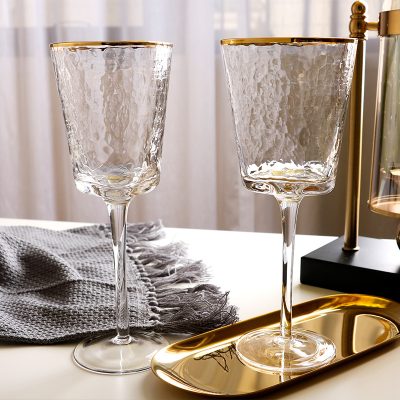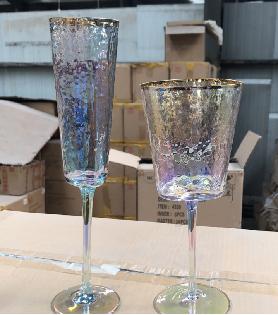Do you have to use a flute glass to drink champagne?
Champagne and flutes have long been a common combination, and the elegant flute shape of the flute is the face of many people’s champagne glasses. Now, however, more and more people are proposing a different sound: a flute-shaped glass might not be a better choice for drinking champagne.
common champagne glasses
Generally speaking, the following three types of champagne glasses are more common:
1. Champagne Cup | Champagne Coupes Saucers
The saucer-shaped champagne flute is perhaps the more traditional, old-fashioned champagne flute that was very popular in the early 20th century. Some people say that its cup comes from the left breast of Queen Mary of France, so this kind of wine glass attracted many people’s imagination at the time.
However, this kind of shallow glass is easy to dissipate the fruity aroma and bubbles quickly, and it is not easy to observe the beautiful bubble rising process compared with the following two darker wine glasses, so except for some retro molecules, this kind of Champagne glasses are not very popular among ordinary champagne lovers. (Recommended reading: 10 of the most expensive champagnes in the world)
2. Champagne Flutes | Champagne Flutes
The flute-shaped champagne glasses are more popular these days. The elegant and slender shape of the glass is very suitable for drinkers to appreciate the process of bubbles rising from the bottom of the glass, and the narrow mouth can also make the fruit aroma and bubbles more concentrated.
3. Tulip Champagne Glass | Champagne Tulips
The bottom of the tulip-shaped champagne glass is a long inverted triangle, and the top of the glass is larger than the flute-shaped glass, and it also has a larger glass belly, and the longer glass body is also suitable for enjoying bubbles.
Flutes are not suitable for champagne?
Since the 1980s, flute glasses have gradually become the most popular champagne glasses in the world. However, other than the convenience of appreciating the bubbles, the flute cup does not actually have many advantages. Due to the large body of the ancient saucer cup, it is easy to increase the chance of contact between the palm of the hand and the body of the cup, which warms the wine and affects the wine tasting experience – as shown below, Xiao Lizi gave everyone in the movie “The Great Gatsby”. Demonstrates the wrong cup-holding position. The slender flute cup does not have this trouble.
However, in the final analysis, wine tasting still focuses on smelling and tasting, and the narrow mouth of the flute-shaped cup undoubtedly adds a lot of difficulties to smelling the aroma. In addition, the narrow mouth of the glass will also cause the contact area between the wine and the air to be too small, making it difficult to sober up the wine, and it is difficult to give full play to the potential of champagne.
Many champagne professionals have an objection to flutes. Maggie Henriquez, CEO of Krug, which just held its 2004 Champagne release in Hong Kong this week, said publicly: “Drinking champagne with a flute is like going to a concert with earplugs on.” The glass detracts from the experience of tasting champagne.
Jean-Baptiste Lécaillon, the cellar master of the Louis Roederer Champagne house, famous for its Cristal champagne, also does not recommend the use of flutes. He believes that champagne needs to be in full contact with the air in order to fully develop its potential.
Substitute: white wine glasses?
Many people use the discovery when visiting a champagne house, and some wineries use white wine glasses or Burgundy glasses to let guests taste their champagne. White wine glasses are also used in many champagne glasses, which are simple and straightforward, and can save you the cost of purchasing separate champagne glasses.
At the same time, some major champagne houses are still developing their own champagne-style wine glasses, such as the custom-made tulip glasses of Cooke Champagne in the picture above. In addition, Lehmann, a professional wine glass brand, also designed a unique champagne glass that widens the belly of the tulip glass while retaining the height of the flute-shaped glass. The overall look is a bit like a hot air balloon.
The ideal champagne glass not only moves the bubbles vertically, but also allows the air to make full contact with the wine. Until the real champagne glasses actually come out, Burgundy may be our best bet. Champagne is the queen of wine, and it is a wine that many people like to drink now.

















